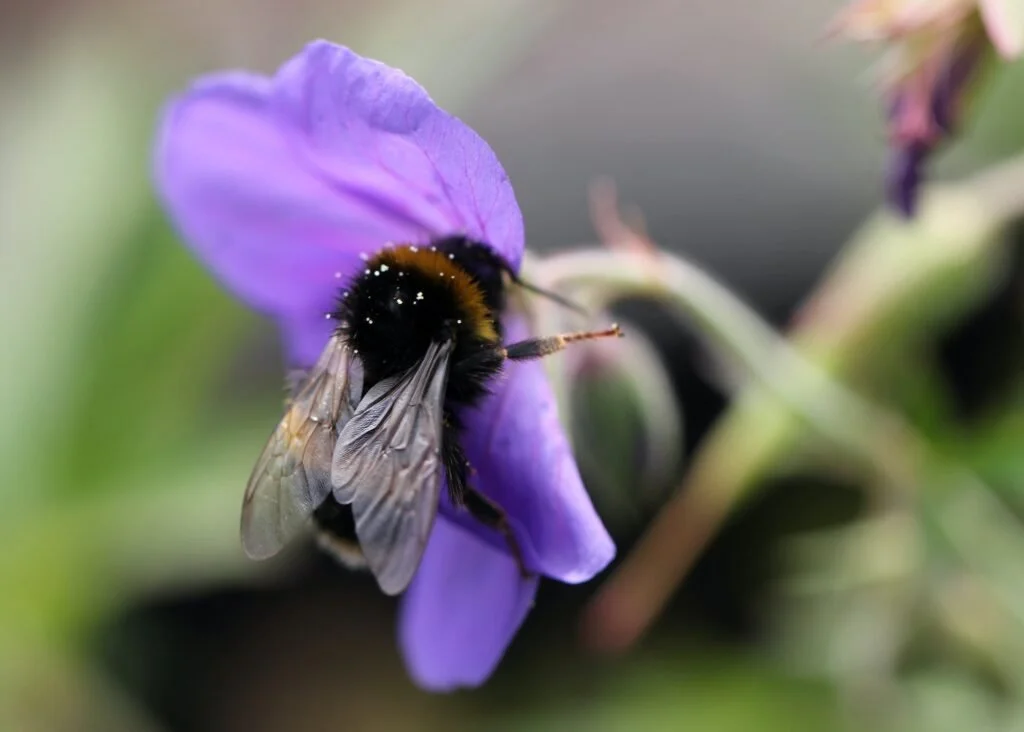Last Thursday, I took part in the House of Commons Environment Committee hearings into Canada’s freshwater resources. Appearing before us were representatives from Health Canada, Indigenous Services Canada, Agriculture and Agri-Food Canada and Global Affairs Canada. As you can imagine, the issue of freshwater resources is an immense and complicated—but extraordinarily important—subject, so the conversation was lively and illuminating. Indigenous Services officials were, of course, asked why there were still 28 First Nations communities with boil-water advisories eight years after the government promised to fix the huge problem of neglect they found when taking office. Most of these problems go back much further than eight years. For example, the Neskantaga First Nation in Ontario has been on a boil water advisory since 1995. While some of these situations face jurisdictional and engineering challenges, we can all agree they would have been fixed much more quickly in non-indigenous communities.
High levels of arsenic detected in 112 wells across N.L. — and hundreds more could be at risk
More than 100 households in Newfoundland and Labrador have learned their well water contains dangerous levels of arsenic — and hundreds more across the province may be drinking the toxin without knowing it. The Department of Environment recently released the first batch of results from its free testing program for private wells it announced last year.
'Continue to test': High sodium levels affecting drinking water at Township of Rideau Lakes municipal offices
“We tested in 2015 and had 53 milligrams per litre result. Over 20 mg/l needs to be reported to health unit — they advise that a notice should be posted to advise users who may have a medical reason to manage sodium intake — which we did. When we did a test this spring, it came back 120 mg/l. Again, we advised the health unit and posted.”
Government of Canada moves forward on federal pesticide commitments
Today, Health Canada, along with Environment and Climate Change Canada (ECCC), and Agriculture and Agri-Food Canada (AAFC), announced the next steps toward a sustainable approach to pesticides management in Canada. Establishing Maximum Residue Limits (MRLs) is one component of Health Canada’s rigorous pesticide risk assessment process. Health Canada scientists consider information from all available scientific studies and conduct a dietary risk assessment before they set MRLs.
'Forever chemicals' found in Canadians' blood samples: report
Toxic "forever chemicals" are being found in the blood of Canadians — and even higher levels are being found in northern Indigenous communities — says a new report from the government of Canada. Health Canada and Environment Canada have released a draft assessment of the science on per- and polyfluoroalkyl substances (PFAS). Both departments propose listing the human-made chemicals as toxic under the Canadian Environmental Protection Act (CEPA). Canadians have until mid-July to weigh in on the proposed change.
Drinking water flows through asbestos pipes in Charlottetown, investigation shows
Charlottetown is one of many towns, districts and municipalities in Canada where drinking water is still flowing through asbestos cement pipes, an investigative report by a national broadcaster has found. W5 said it checked with more than 100 towns, districts and municipalities in the country and 90 per cent of them do have asbestos pipes. The pipes were installed decades ago, and all are nearing end-of-life but are still delivering tap water.
Environmental consultant provides update on fuel leak south of Quesnel
An update on the area of notification connected to the fuel leak at the Lhtako Gas & Convenience Store has been provided. SLR Consulting, the environmental consultant hired by Lhtako, says the area of notification for tap water sampling includes 36 separate legal properties off-reserve, and 1 on-reserve property. It says 30 off-reserve properties and the 1 on-reserve property have been tested as 4 of the legal properties share a well with an adjacent property and one has no building and is not occupied. SLR says to date the water on just 3 properties have been identified as having concentrations of gasoline-related parameters above Health Canada and provincial drinking water criteria.
PUC confirms asbestos pipes used for Sault drinking water
A very small percentage of water mains carrying drinking water to residents of Sault Ste. Marie have asbestos in them, PUC has confirmed. Although there is some debate on the subject, Health Canada has concluded that there is no evidence ingesting the substance is harmful to your health. Recently, an episode of the CTV television program W5 reported that asbestos-cement pipes are used in many municipalities across the country to deliver drinking water to residents.
Health Canada proposes lower detection levels of 'forever chemicals' in drinking water
So-called “forever” chemicals are being consumed by people on a daily basis from a variety of ordinary materials, revealed a new report. In a study published in Environmental Science and Technology, researchers from the University of Toronto, Indiana University and the University of Notre Dame examined 42 different types of food packaging samples and found the presence of pre-and polyfluoroalkyl substances (PFAS), also known as “forever chemicals” in 55 per cent of the samples taken.
Medicine Hat will test drinking water for asbestos fibres
The city says it’s taking action to address concerns about what may be in our water supply. An investigative piece by CTV’s W5 last month shed light on how fibres from aging asbestos-cement pipes could be entering municipal water supplies. In response to the piece, the city posted an information page about asbestos and why municipalities currently don’t test for it in the water.
More than a third of Richmond's drinking water pipes have asbestos
More than a third of the City of Richmond’s pipes delivering drinking water to its residents are made of cement containing asbestos. The statistic came to light last week on CTV’s W5 investigation show, with Richmond having the ninth-highest percentage of asbestos cement pipes - compared to its entire network - among the 100 cities contacted nationwide.
What people should be aware of when using a humidifier
Humidifiers are designed to help you breathe better, but depending on the type you have and the water you use, it might also be affecting your air quality at home. "It's not that I am saying humidifiers (are) completely bad for people. It's just we should be aware that the water quality we put into the humidifier is directly reflecting the quality of the indoor air you're breathing," said Ran Zhao, an assistant professor of Environment Chemistry at University of Alberta.
Charlie Lake residents to gather over water troubles
In 2019, Health Canada set new health-based drinking water guidelines for manganese, an essential element present in various foods. High concentrations can cause discoloured water and staining, but new research found it also impacts health. Long-term exposure in high concentrations impact childhood development, especially for infants who are fed formula prepared with tap water.
So-called ‘safe’ pesticides have surprising ill effects
Health Canada is currently reviewing regulations for pesticides in Canada, and three UBC researchers say regulators might want to consider what happened in Japan. A lake in Shimane Prefecture has seen its commercial fishery collapse by more than 90 per cent since 1993, when insecticides known as neonicotinoids were first introduced to the area. It just so happens that zooplankton—the tiny creatures in the water that fish feed on—declined by 83 per cent during the same period.
Health Canada downplayed scientific concerns about risks of toxic pesticide that causes birth defects
Canada's pesticide regulator repeatedly ignored red flags raised by its own scientists about the health risks posed by the pesticide chlorpyrifos, stalling a review of the pesticide for close to 20 years, documents obtained by the environmental group Ecojustice reveal. All the while, health concerns raised here at home and worldwide about the pesticide were never publicly shared. Commonly used on crops like wheat, in greenhouses and to kill mosquitoes, chlorpyrifos harms the nervous system and can cause brain defects in children. People are typically exposed by consuming contaminated food residue or water. Canadian farmers used on average 360,000 kilograms of the pesticide each year between 2008 and 2016, and a 2017 federal Canadian health survey found traces of chlorpyrifos on 99 per cent of foods sampled.
Impact of road salt on Cambridge drinking water raising concern
The drinking water supply in the city of Cambridge has higher levels of sodium than recommended by Health Canada according to regular water quality reports taken by the region. The Region of Waterloo website states that regular sodium levels in drinking water should be below 20 mg/L. Anything higher must be reported to public health. A major cause of the increase is the way roads are treated and the type of salt that is used over the winter months. It's an issue the region is working on.
BLOG: An Ontario problem, a prairie concern
In the spring of 2018, Health Canada proposed a ban on all agricultural uses of two insecticides, thiamethoxam and clothianidin. Health Canada scientists said the insecticides, known as neonics, were accumulating in ponds, creeks and other water bodies near agricultural land. The concentrations were harmful to midges and mayflies and therefore posed a threat to birds and other animals that rely on the insects for food.
'Exceedingly high' levels of E. coli detected in Belleisle Bay
Results from recent water tests in the Belleisle Bay reveal abnormally high levels of E. coli. When tested in late September, the Belleisle Watershed Coalition determined E. coli levels in the bay were an average 257 per 100 millilitres of water. That's 367 times higher than the average level of 0.7 E. coli per 100 millilitres detected in August. Some of these levels exceed what Health Canada considers to be safe for recreation, which for the measuring technique used, is less than 200 per 100 millilitres of water. In drinking water, Health Canada recommends no detectable E. coli.
New Muskrat Falls monitoring committee focuses on food, water and methylmercury levels
The head of a new committee tasked with monitoring and health management oversight for Muskrat Falls says he's focused on involving those who know the area best. The government of Newfoundland and Labrador announced last week it has established a Muskrat Falls Monitoring and Health Management Oversight Committee. It's part of a list of recommendations made by the Independent Expert Advisory Committee in 2018 to address concerns related to methylmercury from the controversial hydro-electric project.
Health Canada recruits a Concordia professor for its Science Advisory Committee on Pest Control Products
Xianming Zhang, assistant professor of environmental chemistry in Concordia’s Department of Chemistry and Biochemistry, has been invited to join Health Canada’s new Science Advisory Committee on Pest Control Products. The panel of nine researchers from across the country will provide independent guidance to the Government of Canada’s Pest Management Regulatory Agency.





















